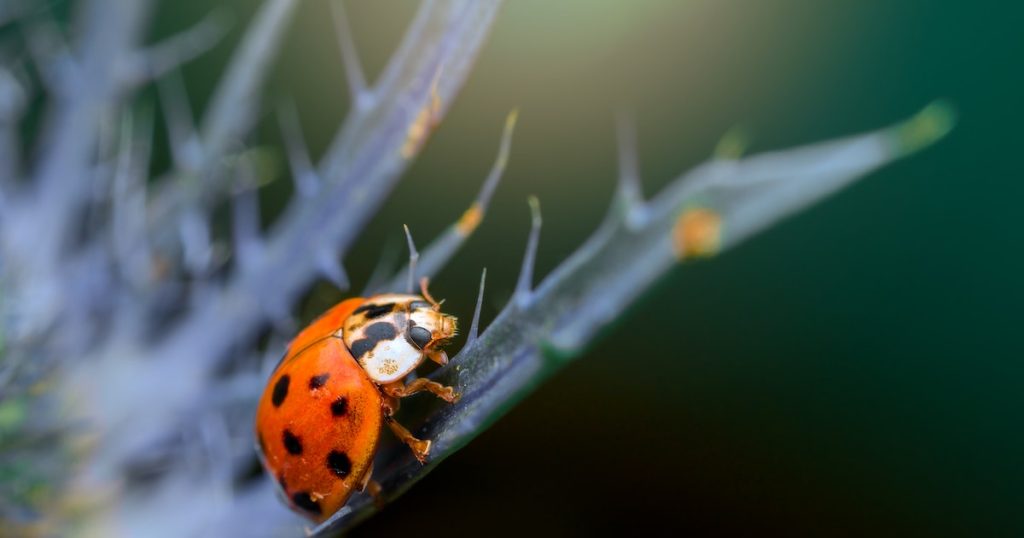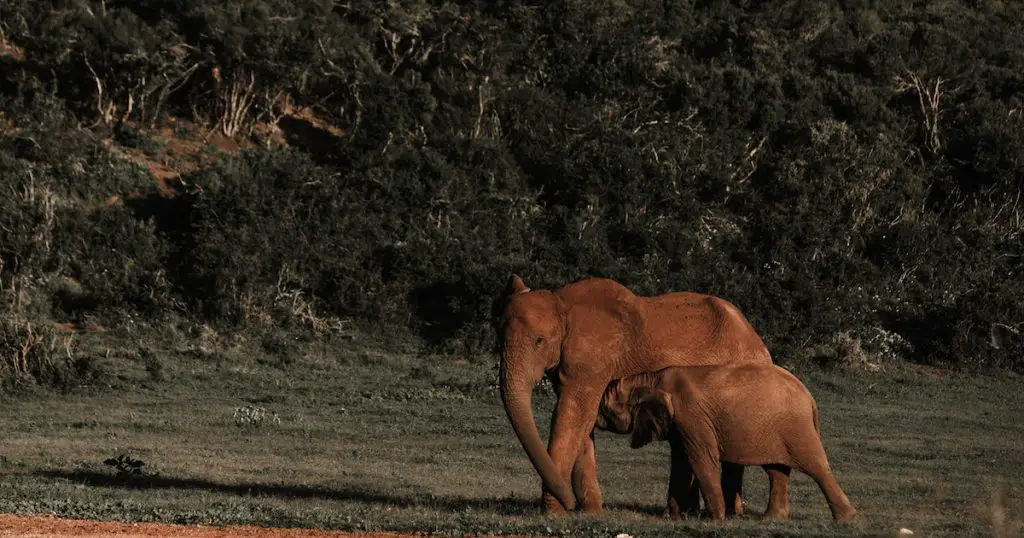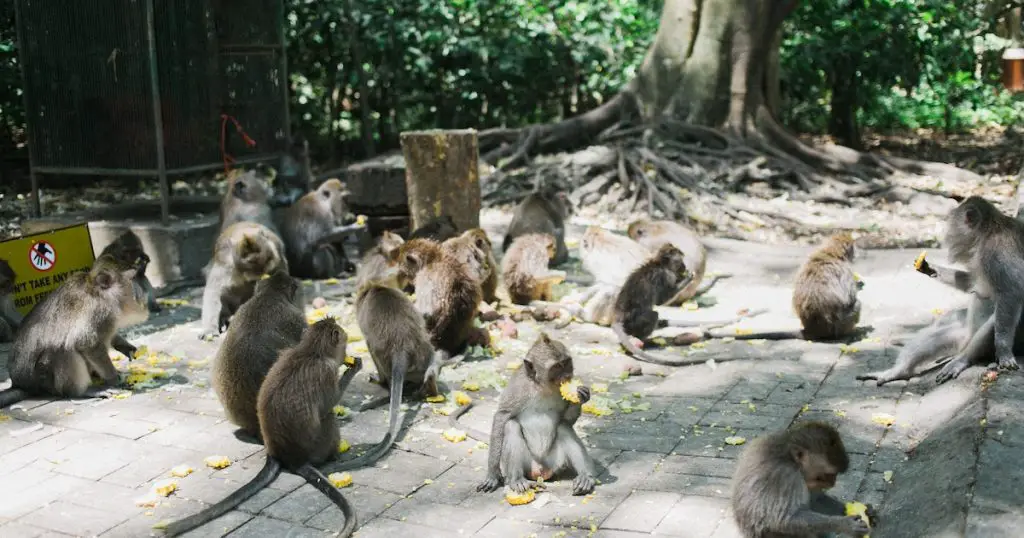Prescott, a jewel of Arizona, boasts a rich ecological landscape that’s a tapestry of biodiversity. Ecological studies of Prescott’s flora and fauna have revealed an intriguing blend of species and interactions that reflect its unique geographical and climatic nuances.

Diving into this tapestry, we uncover the vibrancy and significance of Prescott’s ecological wealth, emphasizing the vitality of conservation and the shared responsibility of locals and visitors alike.
Background and Context
Prescott’s ecosystem isn’t just a result of its current geographical and climatic conditions. Historical events, both natural and man-made, have played a pivotal role in shaping its current ecological state.
The ancient history of Prescott paints a picture of dynamic environmental shifts. From ice ages to arid periods, these changes have left their mark on the area’s biodiversity. Nature.com provides detailed studies highlighting how different epochs have influenced modern-day ecosystems.
But it’s not just the distant past that’s interesting. In recent centuries, the influence of human activities, including agriculture and urban development, has posed new challenges to the flora and fauna. Understanding this context is crucial to appreciating the ecological studies of the region.
Prescott’s Flora
Prescott’s flora is a splendid mosaic of plant life that reflects the region’s varied topography and climate. Towering ponderosa pines stretch skyward in forested areas, while cacti, like the iconic saguaro, stand sentinel in more arid zones.
Wildflowers, in hues of purples, yellows, and reds, carpet the meadows in spring, offering a visual feast for visitors and sustenance for pollinators. From the hardy junipers weathering the sun’s blaze to delicate ferns nestled in shaded nooks, each plant species contributes to the area’s ecological fabric.
Collectively, they play pivotal roles in water conservation, soil health, and providing habitats, underpinning the vitality of Prescott’s natural environment.
Trees
From the tall ponderosa pines to the aromatic junipers, trees are a defining feature of Prescott’s landscape. They play an essential role in the local ecosystem, providing habitats for many creatures and regulating the climate. The whispering pines, for instance, are home to a myriad of bird species, as reported by the Audubon Society.
Another notable tree, the Arizona Walnut, thrives in the region’s riparian zones. While these trees are a treat to the eyes, they’re more than just pretty sights. Their deep roots help prevent soil erosion, ensuring the riverbanks remain stable.
Shrubs
Shrubs like the Manzanita and Scrub Oak cover large parts of Prescott’s rugged terrain. These hardy plants have adapted to the area’s varying temperatures and precipitation levels.
The Manzanita, with its striking red bark and lovely flowers, not only beautifies the landscape but also offers berries that serve as food for numerous birds and mammals. Sites like Arizona Highways have featured these shrubs, underlining their ecological and aesthetic importance.
Grasses and Flowering Plants
Grasslands in Prescott are more than just open fields; they’re bustling ecosystems. From native bunchgrasses to vibrant wildflowers like the Indian Paintbrush, they offer sustenance to a wide array of fauna.
In spring, these grasslands transform into a painter’s palette, with colors spanning the entire spectrum.
Conservation Efforts for Flora
Preserving Prescott’s botanical wonders isn’t just about maintaining its beauty. Conservation is crucial for the survival of numerous species. Organizations such as the Plant Conservation Alliance work tirelessly to ensure that the region’s diverse flora continues to thrive.
They run various programs aimed at habitat restoration and sustainable development, emphasizing the delicate balance between nature and human intervention.
Prescott’s Fauna
Prescott’s fauna is a testament to the region’s ecological richness and diversity. Nestled amidst its landscapes are creatures ranging from the nimble pronghorns sprinting across open grasslands to melodious songbirds adorning the skies.
Majestic raptors, like the red-tailed hawk, soar above, while smaller mammals, such as the cottontail rabbit, navigate the underbrush. Each species, whether it’s a reptile basking in the sun or a nocturnal mammal embarking on a nightly forage, contributes uniquely to Prescott’s vibrant ecological narrative.

This diverse fauna not only adds to the region’s natural beauty but also plays crucial roles in maintaining the balance and health of the ecosystem.
Mammals
Mammals form an integral part of Prescott’s ecosystem. From the elusive bobcats to the industrious beavers, each mammal has its unique role. The pronghorns, often seen grazing in the meadows, are a testament to the area’s biodiversity.
The Black-tailed jackrabbit, with its long ears and swift movements, is yet another marvel. Their behavior and habitats have been extensively studied on platforms like National Geographic.
Birdwatchers would find Prescott a paradise. With avian species ranging from the majestic bald eagles to the melodic western bluebirds, the skies and trees are always alive with song and color.
Wetlands in the region, as highlighted by BirdLife International, offer sanctuaries to migratory birds, making the area crucial for global avian migration routes.
Reptiles and Amphibians
While the scorching sun might deter some, it’s perfect for the reptiles of Prescott. The Gila monster, a lizard with striking colors, is among the many reptiles calling this region home.
Amphibians, too, have a presence, with creatures like the Arizona treefrog making night-time serenades a regular occurrence.
Efforts to Protect and Preserve Wildlife
While Prescott’s fauna is diverse, it isn’t free from threats. Urbanization and climate change pose significant challenges.
Thankfully, organizations such as The Wildlife Society are working to protect these animals, ensuring they remain a part of Prescott’s rich tapestry for generations to come.
Ecological Interactions
Ecological interactions in Prescott paint a dynamic and intricate tapestry of life. These interactions, ranging from symbiotic relationships where species benefit one another, to predator-prey dynamics, play a pivotal role in maintaining ecological balance.
For instance, pollinators like bees and butterflies assist in plant reproduction, while the presence of apex predators ensures a check on the overpopulation of certain species. These relationships not only signify the interdependence of organisms but also highlight the fragility of the ecosystem.
Any disruptions, whether natural or human-induced, can ripple through the system, underscoring the importance of preserving these interactions for Prescott’s ecological health.
Symbiotic Relationships
From pollination by bees to seed dispersal by birds, symbiotic relationships are everywhere. For instance, the yucca plant and the yucca moth share an intricate relationship.
The moth pollinates the plant while laying its eggs, ensuring the next generation has a food source. This dance of nature ensures the survival of both species.
Impact of Invasive Species
Invasive species can disrupt local ecosystems. Plants like the buffelgrass, not native to Prescott, can outcompete local flora.
Invasive Plant Science and Management journals shed light on the threats posed by such species and the measures taken to control them.
Natural Disturbances
Fires, floods, and storms shape ecosystems. While they can be destructive, they also pave the way for new growth.

For instance, certain pine cones in Prescott only release their seeds after a fire, ensuring forest regeneration. Learning from the US Forest Service gives insights into how these disturbances impact local ecology.
Impact of Urban Development
The surge of urban development in Prescott has cast both shadows and light on its native ecology. As infrastructure expands and populations grow, habitats face fragmentation, leading to reduced biodiversity and altered animal migration patterns.
Water sources, a lifeline for many species, may become scarce or polluted. On the brighter side, urbanization has also brought increased awareness of the need for sustainable practices and green spaces.
While development is vital for economic growth, it’s imperative for Prescott to strike a harmonious balance between modernization and conservation, ensuring its rich ecological heritage remains undiminished.
Historical Expansion
Historically, as Prescott expanded, habitats were altered. While development brought economic growth, it also fragmented natural landscapes, posing challenges to flora and fauna.
Fortunately, the importance of sustainable development is now recognized. Green building practices, urban forestry, and community gardens are just a few examples. Resources like The Urban Developer detail how cities like Prescott are evolving sustainably.
Climate Change Implications
Climate change looms as a formidable challenge for Prescott’s diverse ecosystem. As global temperatures rise and precipitation patterns shift, the delicate balance of flora and fauna in the region faces disruption.
These alterations may lead to shorter bloom periods for plants, changes in migration routes for birds, and varying hibernation patterns for local mammals. Moreover, the increasing frequency of extreme weather events poses threats to both terrestrial and aquatic habitats.
For Prescott, understanding and mitigating these climate-induced changes is crucial to ensure the continued vibrancy and health of its ecological tapestry.
Observed Changes
The signs of climate change in Prescott are undeniable. Rising temperatures and shifting precipitation patterns have immediate and long-term effects on local ecology.
Studies from platforms like Climate Central provide an in-depth look at these changes.
Local Initiatives
Local initiatives, like tree-planting drives and water conservation programs, are combating the adverse effects of climate change.
Schools, local businesses, and community groups are collaborating to ensure a sustainable future for Prescott.
Predicted Outcomes for Flora and Fauna
As per projections from institutions like the Intergovernmental Panel on Climate Change (IPCC), Prescott could face warmer temperatures, altered precipitation patterns, and increased instances of extreme weather events.
Such changes can shift the bloom periods for plants, migration patterns for birds, and hibernation schedules for mammals.
Local Community and Ecological Studies
The bond between Prescott’s local community and its surrounding ecology is both deep and symbiotic. Residents, empowered by a rich natural heritage, actively engage in ecological studies, showcasing their commitment to understanding and preserving their environment. Educational institutions in the area serve as focal points for this research, sparking curiosity and fostering a culture of conservation.
Simultaneously, the rise of citizen science initiatives highlights the community’s proactive role, turning everyday observations into valuable data. In this interplay between the community and nature, Prescott emerges as a model for how human curiosity and commitment can positively influence ecological understanding and conservation.
Educational Institutions and Their Research
Local educational establishments, such as Prescott College, are hubs for ecological research. Students and professors alike delve into the region’s biodiversity, uncovering secrets and finding sustainable solutions to pressing environmental challenges.
Their findings, often published on platforms like ResearchGate, contribute immensely to global ecological understanding.
Citizen Science and Its Role in Conservation
The people of Prescott aren’t mere spectators; they’re active participants in conservation. Citizen science projects, where locals contribute data about species sightings or seasonal changes, have gained momentum.

Organizations like iNaturalist provide platforms for these enthusiasts to share their observations, bridging the gap between professional scientists and the general public.
Eco-tourism Opportunities and Implications
Eco-tourism has been a boon for Prescott. Visitors, drawn by the region’s natural beauty, are introduced to its ecological significance through guided tours, nature walks, and interactive workshops. However, it’s a double-edged sword.
While eco-tourism generates revenue and increases awareness, it’s crucial to manage it sustainably to prevent habitat disturbances. Websites like Ecotourism.org highlight best practices and how they’re applied in places like Prescott.
Future of Prescott’s Ecology
The future of Prescott’s ecology teeters on a delicate balance. As this Arizonan gem grapples with challenges like urbanization, climate change, and invasive species, it also stands resilient with its community’s commitment to conservation.
Leveraging technological advancements, fostering local awareness, and prioritizing sustainable practices will be paramount. With a blend of proactive measures and adaptive strategies, Prescott’s ecological tapestry has the potential to not only endure but also thrive, showcasing a harmonious coexistence between nature and human progress.
Prospective Challenges and Solutions
While urbanization and climate change are significant challenges, invasive species, and water scarcity also loom on the horizon. However, the community’s resilience, combined with scientific research, paves the way for innovative solutions.
Collaborative efforts, as highlighted by the Conservation Fund, are working towards creating a harmonious balance between development and conservation.
Technological Advancements Aiding in Conservation
Technology is a formidable ally in conservation. From drone monitoring to data analytics predicting ecological shifts, technological advancements are reshaping conservation strategies.
Websites like ConservationTech showcase how these technologies are employed in regions like Prescott.
FAQs:
In this section, we will be delving into some of the most common inquiries and curiosities that surround our topic.
Why are ecological studies important for Prescott?
Ecological studies provide insights into the intricate relationships between organisms and their environment. For Prescott, understanding these dynamics is essential for conservation and sustainable development.
What can locals do to support preservation efforts?
Locals can participate in community clean-ups, support sustainable practices, engage in citizen science projects, and promote eco-friendly tourism.
How has Prescott’s ecosystem changed over the past century?
Increased urbanization, shifts in climate patterns, and the introduction of invasive species have caused noticeable changes in Prescott’s ecosystem over the past century.
Are there any endangered species in the region?
Yes, several species in Prescott are at risk due to various factors. These include certain bird species, mammals, and plants that face threats from habitat loss and climate change.
How can one get involved in local conservation projects?
Locals can join community groups, participate in events organized by environmental NGOs, or even start their initiatives. Collaboration is key to effective conservation.
Conclusion and Reflection
Prescott’s ecological landscape, a delicate weave of flora, fauna, and human influence, stands as a testament to nature’s resilience and beauty. It serves as a reminder that every individual, every species, and every tree has a role to play in the larger picture.
As we move forward, embracing sustainable practices, supporting conservation, and fostering a deep love for our environment are more crucial than ever. The tapestry of Prescott’s ecology is rich and vibrant, and with collective effort, it can remain so for generations to come.



Leave a Comment
You must be logged in to post a comment.